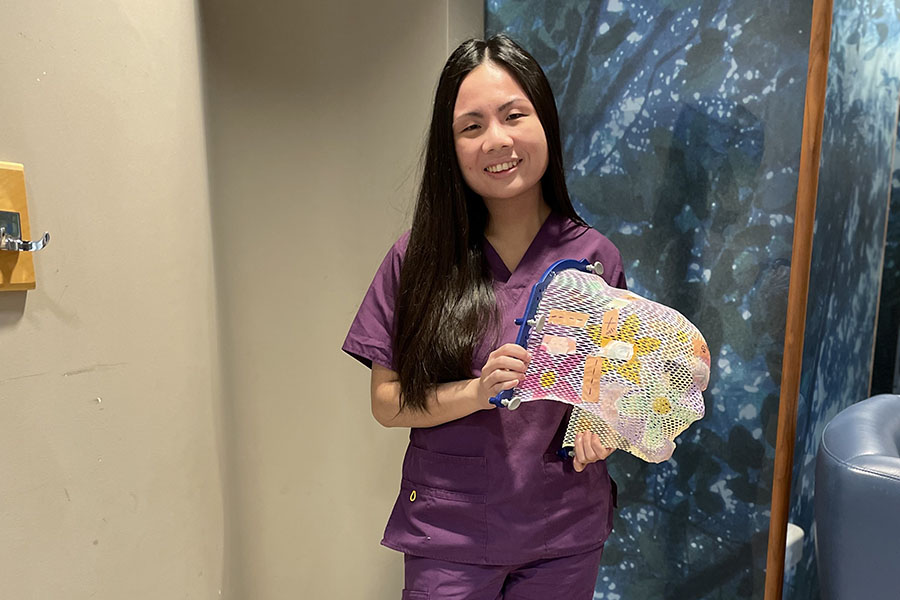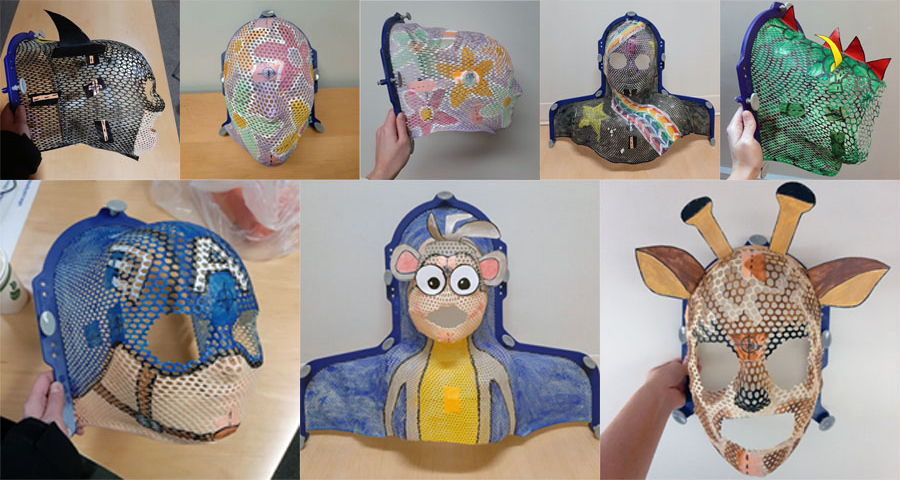
The way Kayli Chen sees it, they're all superheroes in the battle to calm pediatric cancer patients during radiation treatment.
Kayli, a student in radiation therapy at the Princess Margaret Cancer Centre, noticed some of the youngest patients would become stressed and squirmy before and during treatment. She reasoned that a little art work would help them relax, so at the end of each workday in the Princess Margaret's Radiation Medicine Program – Canada's largest treatment centre – Kayli goes home to begin designing radiation masks for children.
"I really love children and if I can help them smile during treatment, that makes me so happy," says Kayli, who is excited to be presenting her initiative at a conference for radiation therapists this spring.
All patients with head, neck or brain cancer need to wear radiation masks during radiotherapy to ensure their head is in exactly the right position and the radiation beams directly onto the tumour.
The masks, made of thermoplastic, are custom fitted for each patient before radiation. Therapists mould the plastic to a person's face and neck and shape it around their head. There are openings for eyes and mouth and during radiation the mask is secured to the treatment table.
Growing up as an only child, Kayli often used art work to connect with friends. As an undergraduate student in life sciences at the University of Toronto (U of T), she organized "The Art of Science" so students could share their photography, music, and artistic skills with one another.
Using water-based acrylic paints, Kayli bases her mask designs on input from the young patients, who fill out a questionnaire about their favourite animal, colour, movie, cartoon, as well as what they don't like.
Captain America from Avengers, Boots of Dora fame, and Batman and Spiderman are a few of her custom designs. She's also done a dragon and one festooned with flowers.

"But they loved the mask and it made them very happy.
Sadly, the patient later passed away. But Kayli takes solace in the fact she was able to make the patient happy during his treatment. And, the family kept the mask as a keepsake.
"That was the most impactful moment I have had in the clinic," Kayli says.
Susan Awrey, Pediatric Radiation Nurse Coordinator at the Princess Margaret and the Hospital for Sick Children, says "the art work helps the masks look friendlier and the kids love them.
"When parents watch their kids in the masks, they feel better," Susan says. "The toughest thing for the kids is the parents have to leave the room during radiation treatment."
The Radiation Medicine Program at the Princess Margaret treats between 120 and 140 children a year and has developed other ways to help them relax including DVDs and a special interactive app, Rads4Kids, which helps children understand their treatment. The program also does total body radiation for children getting bone marrow transplants.
In Canada, about 80 per cent of children diagnosed with cancer survive. More than 10,000 children, adolescents and young adults are currently being treated for cancer or undergoing a five-year follow-up.
Wednesday, Feb. 15 is International Childhood Cancer Day, a global collaborative campaign to raise awareness about childhood cancer, and to express support for children and adolescents with cancer, the survivors and their families.
Every year, more than 400,000 children and adolescents under the age of 20 are diagnosed with cancer. The rate of survival depends on the region, with 80 per cent survival in most high-income countries, but as low as 20 per cent in low- and middle- income countries.
This story first appeared on UHN News